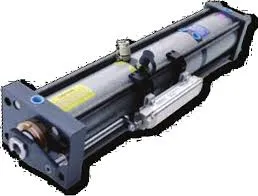Dec . 03, 2024 23:28 Back to list
Essential Components for Hydraulic Cylinder Products and Their Applications
Understanding Parts for Hydraulic Cylinder Products
Hydraulic cylinders are vital components in various machinery and industrial applications, providing the necessary force and motion to perform essential tasks. Whether in construction equipment, manufacturing machines, or automotive applications, hydraulic cylinders rely on a range of parts to function effectively. Understanding these parts is crucial for maintenance, repair, and optimal performance of hydraulic systems.
Key Components of Hydraulic Cylinders
1. Cylinder Barrel The cylinder barrel is the main body of the hydraulic cylinder. It houses the piston and provides a space for hydraulic fluid to operate. The material used for the barrel must be durable and resistant to corrosion, often made from high-strength steel or aluminum. The inner surface of the barrel is finely honed to minimize friction and wear.
2. Piston The piston is a crucial part that moves within the cylinder barrel. When hydraulic fluid is pumped into the cylinder, it pushes the piston, creating linear motion. Pistons can be single-acting or double-acting; single-acting pistons exert force in one direction, while double-acting pistons can exert force in both directions, making them versatile for different applications.
3. Rod The rod is connected to the piston and extends outside the cylinder. It is responsible for transmitting the force generated by the hydraulic fluid to the machinery or component it is actuating. Rods are often chrome-plated to enhance their durability and reduce the likelihood of wear and tear.
4. End Caps End caps seal the ends of the cylinder barrel. They serve to contain the hydraulic fluid within the cylinder and support the rod when it extends or retracts. The end caps are designed to withstand high pressures and are typically fitted with seals to prevent fluid leakage.
5. Seals and O-Rings Seals and O-rings play a critical role in ensuring the hydraulic system's integrity by preventing hydraulic fluid from leaking out of the cylinder. Various types of seals are used, including wiper seals, rod seals, and pressure seals, each designed for specific functions within the cylinder.
parts for hydraulic cylinder products

6. Hydraulic Fluid While not a mechanical part, the hydraulic fluid is essential to the operation of hydraulic cylinders. It transmits power by flowing through the system and helps lubricate and cool the components. The type of hydraulic fluid used can greatly affect the cylinder's performance, with options ranging from mineral oils to synthetic fluids.
Importance of Quality Parts
Using high-quality parts in hydraulic cylinders is paramount for ensuring reliability and efficiency. Poor-quality components can lead to early wear, leaks, and eventual system failure, leading to costly downtime and repairs. It is crucial to source parts from reputable manufacturers and suppliers who adhere to industry standards.
Maintenance and Replacement
Regular maintenance of hydraulic cylinders involves checking for leaks, inspecting seals, and ensuring that the hydraulic fluid levels are appropriate. If any parts show signs of wear or damage, they should be replaced promptly to prevent more severe issues. Those responsible for maintaining hydraulic systems should be well-acquainted with the specifications of the parts to ensure replacements fit and function correctly.
Conclusion
Hydraulic cylinders are essential in many applications, and understanding their parts can significantly affect their performance and longevity. Familiarity with components like the cylinder barrel, piston, rod, end caps, and seals enables better maintenance and efficient operation. By investing in quality parts and performing regular maintenance, users can ensure their hydraulic systems operate smoothly and reliably for years to come. Whether operating in industrial settings or on construction sites, proper knowledge of hydraulic cylinder parts is fundamental to achieving optimal results.
-
Fork Lift Power Units - Hebei Shenghan | Efficiency, Reliability
NewsJul.13,2025
-
1.5-Ton Turbocharged Cylinder-Hebei Shenghan|Hydraulic Solution,Energy Efficiency
NewsJul.13,2025
-
Auto Hoist Power Units-Hebei Shenghan|Efficiency&Industrial Lifting
NewsJul.13,2025
-
Double Acting Power Units-Hebei Shenghan|Hydraulic Solutions,Industrial Efficiency
NewsJul.13,2025
-
1.5 Ton Lifting Cylinder 70/82-40-290-535 - High-Performance Hydraulic Solution | Hebei Shenghan
NewsJul.13,2025
-
Fork Lift Power Units - Hebei Shenghan | Efficiency&Reliability
NewsJul.13,2025
